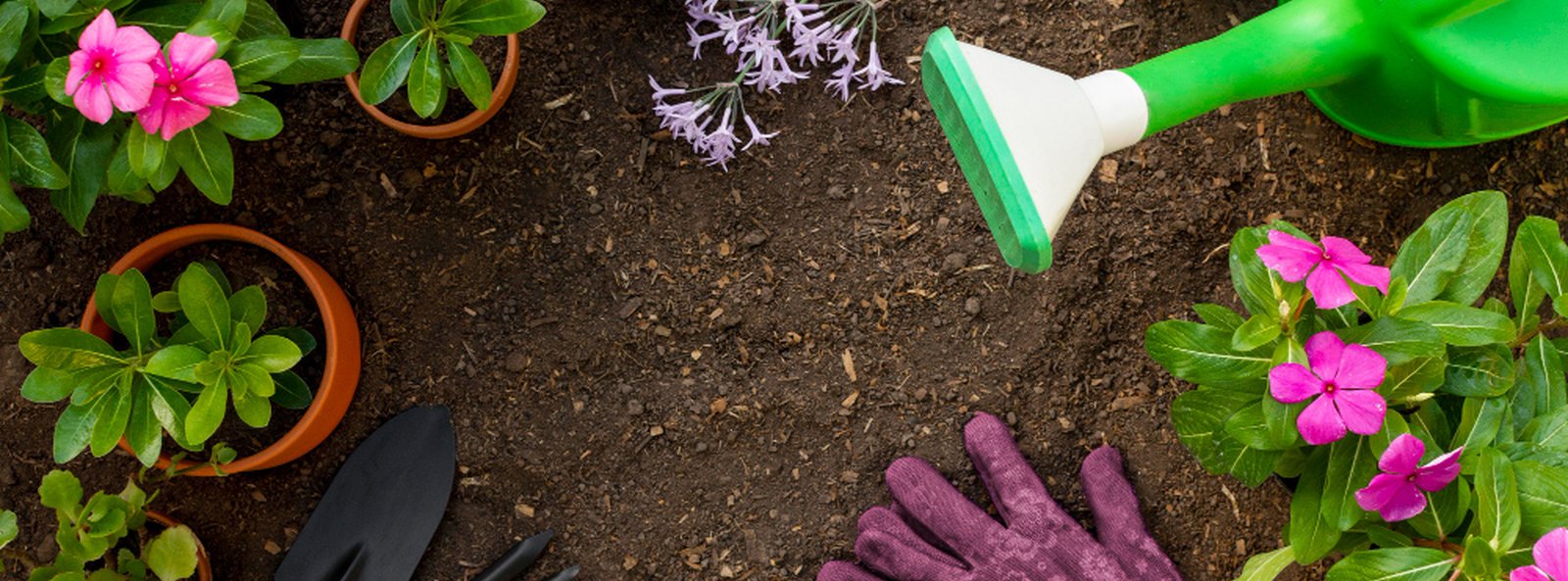Spring is a beautiful time of year when nature wakes up from its winter slumber and bursts into life. It's the perfect season for beginners to start gardening and experience the joy of growing their plants and vegetables. However, getting started in gardening can be overwhelming, especially if you are a beginner. That's why we have put together this essential guide to help you navigate the world of spring gardening.
In this blog, we will cover everything you need to know to create a successful spring garden. From understanding the basics of spring gardening to choosing the right location, preparing your soil, and selecting the essential tools, we've got you covered. We will also take you through a step-by-step guide to starting your spring garden, managing pests and diseases, watering techniques, mulching, pruning, and maintenance tips. Lastly, we will explore the world of organic gardening and how you can grow your organic produce.
Whether you have a large outdoor space or just a small window box, this guide will provide you with the knowledge and confidence to create a beautiful and thriving spring garden. So let's dig in and get started on your gardening journey!
Key Highlights
- Choose the right location for your spring garden, considering factors like sunlight, moisture, and green space.
- Understand the different soil types and prepare your garden soil with organic matter and compost.
- Equip yourself with the essential gardening tools for beginners, including a spade, trowel, and gloves.
- Follow a step-by-step guide to starting your spring garden, from planning your garden layout to sowing seeds and monitoring plant growth.
- Learn about managing pests and diseases in your garden and explore natural pest control methods.
- Master watering techniques for spring gardens, understanding the needs of your plants and practising water conservation.
- Explore the benefits of mulching and learn how to apply mulch effectively in your garden.
- Get pruning and maintenance tips to keep your garden healthy and thriving.
- Discover the basics of growing organic produce and learn how to prepare an organic garden bed.
Understanding the Basics of Spring Gardening
Before we dive into the specifics of spring gardening, it's important to understand the basics. One of the key factors that can significantly impact the success of your garden is the quality of your garden soil. Good garden soil is the foundation for healthy plants and abundant harvests. It provides the necessary nutrients and supports the growth and development of your plants.
Another factor to consider is climate change. With changing weather patterns, it's important to adapt your gardening practices accordingly. Spring gardening requires an understanding of your local climate and how it can affect your plants. This will help you make informed decisions about what to plant and when ensuring the best chances of success.
Lastly, consider your outdoor space. Whether you have a large backyard or a small balcony, there are gardening options for every space. Even a small window box can be transformed into a vibrant garden. Understanding your outdoor space will help you make the most of it and maximize the potential of your spring garden.

The Importance of Choosing the Right Location
Choosing the right location for your spring garden is crucial for the success of your plants. Whether you have a backyard, a balcony, or a small window box, finding a suitable spot with enough green space is essential. Green space provides room for your plants to grow and allows for proper air circulation, reducing the risk of diseases.
Sunlight is another important factor to consider. Most plants require at least six hours of direct sunlight daily to thrive. Observe your outdoor space throughout the day to determine the areas that receive the most sunlight. This will help you decide where to place sun-loving plants and where to provide shade for those that prefer indirect sunlight.
Moisture is also a crucial consideration. Some plants prefer moist soil, while others thrive in drier conditions. Before planting, assess the moisture levels in your outdoor space. If you have an area that tends to retain water, it may be suitable for plants that require more moisture. On the other hand, if you have areas that dry out quickly, they may be better suited for plants that prefer drier soil.
Taking the time to choose the right location for your spring garden will set the stage for a thriving garden.
Learning About Soil Types and Preparation
Understanding the composition of garden soil is crucial for successful gardening. Different soil types like sandy, loamy, or clay offer varying levels of drainage and nutrients. Conduct a soil test to determine its pH level and nutrient content, aiding in appropriate plant selection. Amending soil with organic matter such as compost improves its structure and fertility, ensuring healthy plant growth. Proper soil preparation sets the foundation for a thriving garden, supporting the development of robust garden plants. Utilize this knowledge to create an optimal growing environment.
Essential Tools and Resources for Beginners
A beginner gardener must have basic tools such as a hand trowel, pruners, and a garden fork for planting and maintenance. Other resources like gardening gloves and a kneeling pad protect hands and knees. A watering can or hose ensures plants receive adequate moisture. Reference materials like gardening books or online guides provide valuable insights for successful gardening endeavours. Continuous learning and access to a local gardening community are essential resources for novice gardeners.
Basic Gardening Tools Every Beginner Needs
A successful start in gardening requires a few essential tools to make the process smoother. A beginner should have a trowel for planting and transplanting, secateurs for trimming, pruning shears for cutting branches, a garden fork for turning soil, and a watering can to ensure proper hydration for garden plants. These tools are fundamental for maintaining a healthy and flourishing garden, aiding in tasks such as planting, pruning, and soil management. Learning to use them correctly can significantly enhance your gardening experience.
Additional Resources for Continuous Learning
For continuous learning in gardening, online platforms like Gardeners' World offer expert advice on garden plants and fruit trees. Joining local gardening clubs provides hands-on experience and knowledge sharing on garden soil and climate change impact. Subscribing to gardening magazines like The English Garden keeps you updated on trends and techniques for various garden types, from window boxes to outdoor spaces. Online forums and blogs focusing on organic matter and green space insights are valuable resources for aspiring gardeners.

Step-by-Step Guide to Starting Your Spring Garden
Planning your spring garden involves essential steps. Begin by designing your garden layout to optimize space. Next, select suitable plants for the season, considering your region's climate. Step three involves sowing seeds or planting seedlings with care. Remember to provide adequate water and nutrients, crucial for plant growth. Lastly, monitor your plants regularly for any signs of distress or pests. Following these steps diligently will help you kickstart a thriving spring garden.
Step 1: Planning Your Garden Layout
To create an efficient garden layout, start by considering plant sizes and their sunlight requirements. Utilize flower beds for tall plants at the back and shorter ones in the front. Factor in pathways for easy access and maintenance. Think about the aesthetic appeal by incorporating various garden plants that bloom at different times, ensuring year-round colour. Plan for trellises or supports for climbing plants like berries or shrubs, enhancing both beauty and functionality. Choose a design that suits your space and style, promoting a harmonious garden environment.
Step 2: Selecting Spring-Friendly Plants
When choosing spring-friendly plants for your garden, consider those that thrive in the current climate and soil conditions. Select varieties that bloom well in spring, such as perennials and shrubs known to flourish during this season. Incorporate pollinator-friendly plants to attract beneficial insects and encourage a healthy ecosystem. Additionally, include fruit trees or berry bushes for a fruitful garden. Ensure your selection complements each other in terms of growth habits and water needs to create a harmonious and beautiful garden space.
Step 3: Sowing Seeds or Planting Seedlings
Once you've chosen your garden plants, it's time to sow seeds or plant seedlings. Prepare the garden soil with organic matter for optimal growth. Consider the climate change impact on your outdoor space. Whether it's fruit trees or shrubs, ensure the soil has enough moisture. For urban areas like London or balconies in Canada, use window boxes or trellises. Planting perennials or berries can attract pollinators. Beginners can start with easy-to-grow plants that bloom in spring or autumn.
Step 4: Watering and Fertilizing Your Plants
To ensure thriving garden plants, proper watering and fertilizing are crucial steps. Understand the moisture needs of each plant, adjusting based on climate and seasonal changes. Avoid overwatering, as it can lead to root rot. Fertilize your garden with organic matter to provide essential nutrients for healthy growth. Choose fertilizers rich in nitrogen for leafy plants and phosphorus for bloom production. Consistent watering and timely fertilization will support robust plant growth and beautiful blooms.
Step 5: Monitoring Growth and Health of Plants
To ensure the vitality of your garden plants, regularly monitor their growth and health. Look for signs of stress such as wilting or discolouration, which could indicate nutrient deficiencies or pest infestations. Utilize NLP terms like bloom, moisture, and pests to guide your observation process. Implementing proactive measures based on early detection can prevent issues from escalating, promoting a thriving garden environment. Being attentive to the needs of your plants contributes to their overall well-being, fostering a successful gardening experience.

Managing Pests and Diseases
Identifying common spring garden pests and implementing natural, chemical-free control methods are vital in managing pests and diseases effectively. By understanding the lifecycle of these pests and the damage they can cause to your garden plants, you can proactively protect your green space. Introduce beneficial insects, like ladybugs, to combat harmful pests naturally, promoting a balanced ecosystem without relying on harmful chemicals. Regular monitoring and swift action can help safeguard your garden from potential threats.
Identifying Common Spring Garden Pests
Common spring garden pests can include aphids, caterpillars, and slugs. These pests can harm garden plants and disrupt growth. Aphids feed on plant sap, causing yellowing leaves, while caterpillars munch on foliage. Slugs are known for leaving holes in leaves and fruits. Identifying these pests early is crucial for effective management. Utilizing natural pest control methods like introducing beneficial insects can help keep these pests at bay. Regular monitoring and timely interventions are key to maintaining a healthy garden ecosystem.
Natural and Chemical-Free Pest Control Methods
One effective natural pest control method is companion planting, where certain plants are grown together to deter pests. Introducing beneficial insects like ladybugs and lacewings can help control unwanted garden pests naturally. Setting up physical barriers such as row covers can also protect plants from insects. Moreover, practising good garden hygiene by removing debris and weeds can reduce pest habitats without the need for chemicals. Additionally, homemade remedies like garlic spray or neem oil can act as organic solutions to tackle pest issues.

Watering Techniques for Spring Gardens
To ensure optimal growth, mastering watering techniques for spring gardens is crucial. Understanding the moisture requirements of garden plants in the changing climate is essential. Tailoring watering schedules based on plant needs promotes healthy growth. Consider using rainwater or organic matter-enriched water for sustainable practices. Adequate watering fosters lush blooms and fruitful harvests. Balancing water usage with the natural needs of your garden creates a thriving outdoor space. Efficient watering techniques play a significant role in the success of your spring garden.
Understanding the Needs of Your Plants
Plants have diverse requirements based on species, like varying sunlight, water, and soil needs. Understanding these individual needs is essential for healthy growth. Some plants prefer direct sunlight, while others thrive in partial shade. Watering requirements range from regular to sparingly based on the plant type. Soil pH levels also play a crucial role in nutrient absorption. By recognizing and meeting these specific needs, you provide optimal conditions for your garden plants to flourish.
Best Practices for Efficient Water Usage
For efficient water usage in your garden, consider drip irrigation systems to target plant roots accurately. Mulching helps retain moisture, reducing the need for frequent watering. Group plants with similar water needs together and water deeply but infrequently to encourage deep root growth. Utilize rain barrels to collect and utilize rainwater, a sustainable practice that conserves water. Observing the moisture level of the soil and choosing drought-resistant plants can also contribute to water efficiency in your garden.

Mulching and Its Benefits
Mulching is a vital practice in gardening, offering a range of benefits for your plants. By using mulch, you can conserve moisture, suppress weeds, and improve soil health. Different types of mulch, such as organic matter or stones, can enhance the aesthetics of your garden while providing insulation to plant roots. Mulching helps maintain soil temperature, prevent erosion, and promote overall plant growth. It's a simple yet effective way to support the vitality and beauty of your garden.
Types of Mulch Suitable for Spring Gardens
When it comes to types of mulch suitable for spring gardens, consider using organic matter like compost or shredded leaves. These mulches enrich the soil as they decompose, benefiting garden plants. Additionally, straw or grass clippings can help retain moisture and regulate soil temperature during changing spring weather. Each type offers unique benefits for the garden ecosystem, fostering healthy growth and vibrant blooms throughout the season. Experiment with different mulches to find what works best for your specific garden needs.
How to Apply Mulch Effectively
Mulching is a crucial step for a successful garden. To apply mulch effectively, ensure the soil is moist before spreading a 2-4 inch layer around plants, leaving a gap around stems. Mulch should not touch plant stems as it can cause rot. Reapply mulch as needed throughout the growing season to maintain a consistent layer. Proper mulching helps retain moisture, suppresses weeds, and regulates soil temperature for healthy plant growth. Mastering this technique is key for optimal garden maintenance.

Pruning and Maintenance Tips
Regular pruning promotes healthy growth in garden plants. Timing is crucial; prune flowering shrubs after they bloom and fruit trees during winter. Remove dead or diseased branches using sharp, clean tools. Regularly inspect for pest infestations or diseases, ensuring swift intervention. By following a structured maintenance schedule, you'll keep your garden thriving year-round. Remember, proper pruning enhances the overall health and appearance of your plants.
When and How to Prune Your Plants
Pruning your plants at the right time is crucial for their health and growth. In spring, focus on removing dead or diseased branches to encourage new growth. For fruit trees, prune after they have finished blooming to prevent excessive bleeding. Shrubs can be pruned before new growth emerges. Remember to use sharp and clean tools to make precise cuts without damaging the plant. Regular pruning promotes better airflow and sunlight penetration, leading to stronger and more vibrant plants.
Regular Garden Maintenance Checklist
Regular garden maintenance is crucial for the health of your plants. Create a schedule that includes tasks like weeding, watering, and inspecting for pests. Prune dead foliage to promote new growth and improve airflow. Check for any signs of disease or nutrient deficiency. It's also important to fertilize as needed and replenish mulch to retain moisture. By staying on top of these maintenance tasks, you can ensure a thriving and beautiful garden all season long. Remember, a little care goes a long way in gardening.

Growing Organic Produce
To cultivate organic produce successfully, understanding the fundamentals of organic gardening is key. Begin by enriching your garden soil with compost and organic matter to promote healthy plant growth. Prioritize organic pest control methods to safeguard your garden plants without harmful chemicals. Utilize natural pollinators like bees to enhance fruit tree and vegetable crop yields. Embrace sustainable practices such as water conservation and mulching to support the environment and nurture thriving organic produce.
The Basics of Organic Gardening
Organic gardening focuses on cultivating garden plants without synthetic chemicals, promoting a sustainable and eco-friendly approach. It involves utilizing natural methods like composting and mulching to enrich garden soil with essential nutrients. By avoiding pesticides and artificial fertilizers, organic gardening nurtures a healthy ecosystem for your plants to thrive. Incorporating organic matter and mulch enhances soil fertility, supports biodiversity, and reduces reliance on external inputs, fostering a harmonious relationship with nature. Embrace the principles of organic gardening to create a flourishing and resilient garden environment.
Preparing an Organic Garden Bed
To prepare an organic garden bed, start by clearing the area of any debris. Loosen the soil to improve aeration and drainage. Incorporate compost and organic matter to enrich the soil with essential nutrients. Consider using natural mulch to retain moisture and suppress weeds. Choose plants that thrive in your climate and provide adequate spacing for growth. By creating a well-balanced organic bed, you can nurture a healthy and sustainable garden ecosystem.
Conclusion
Spring gardening can be a rewarding experience for beginners with the right knowledge and tools. Choosing the correct location, understanding soil preparation, and selecting suitable plants are key steps to a successful garden. Regular monitoring, watering, and pest control contribute to plant health. Mulching aids in moisture retention and weed suppression. Pruning and organic gardening practices promote sustainability. By following these essential tips, novice gardeners can enjoy a bountiful and thriving spring garden. Embrace the joy of gardening and watch your efforts bloom into a colourful and vibrant outdoor space. Happy gardening!





